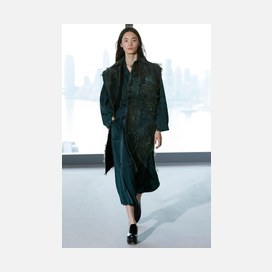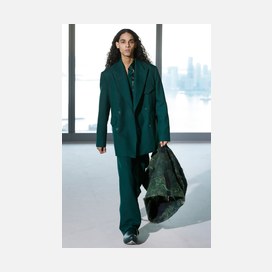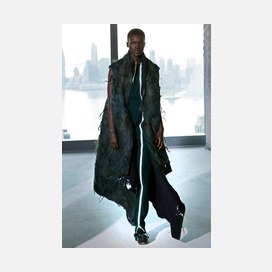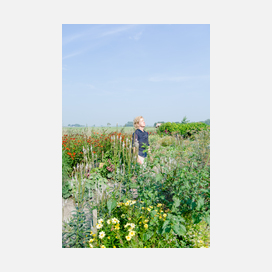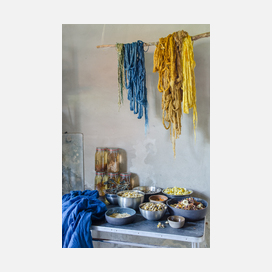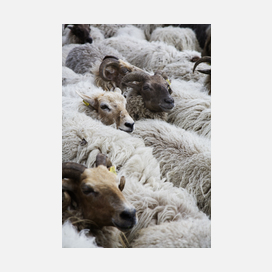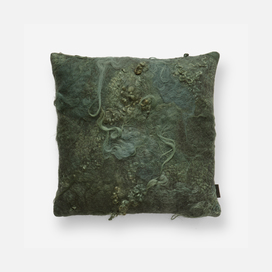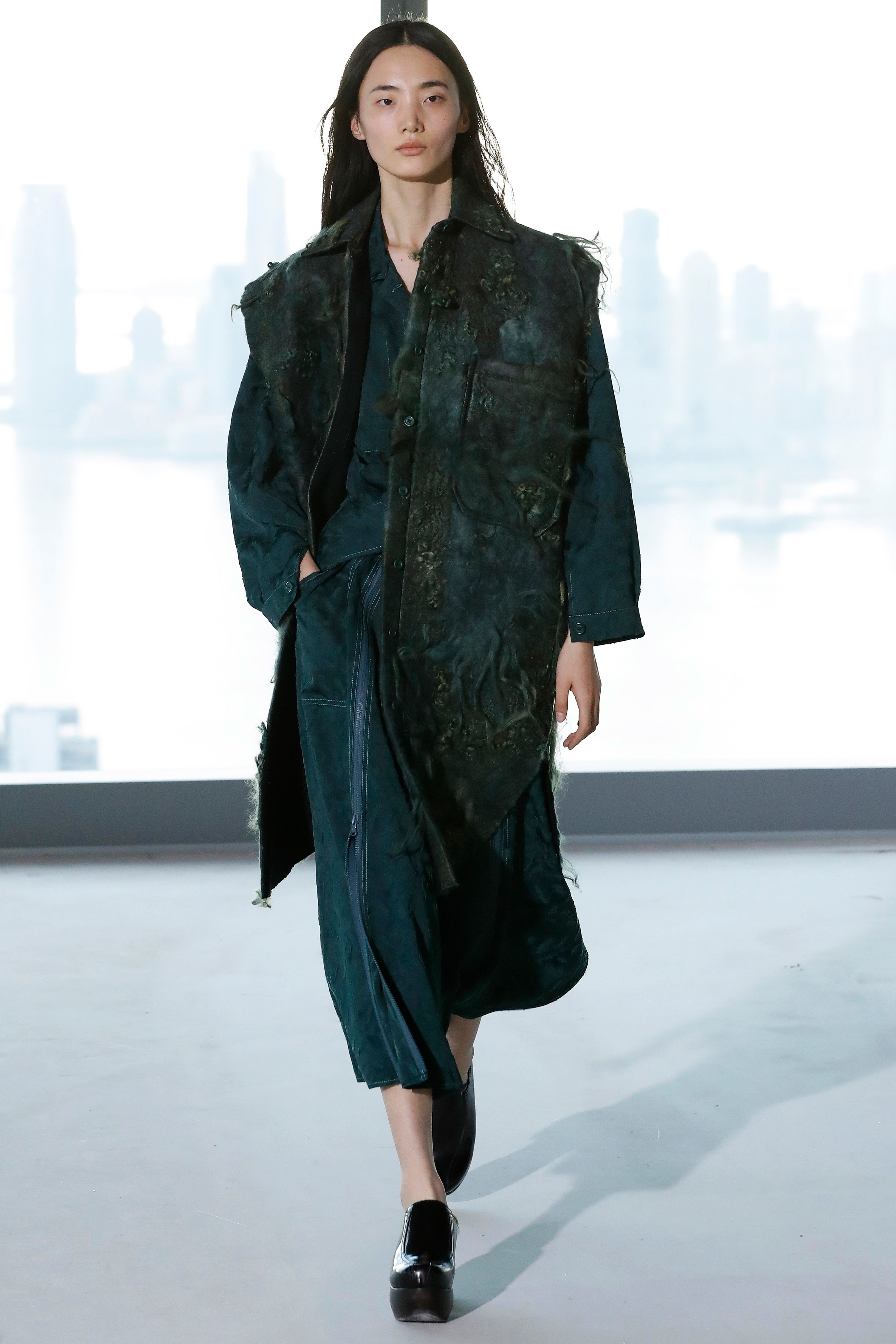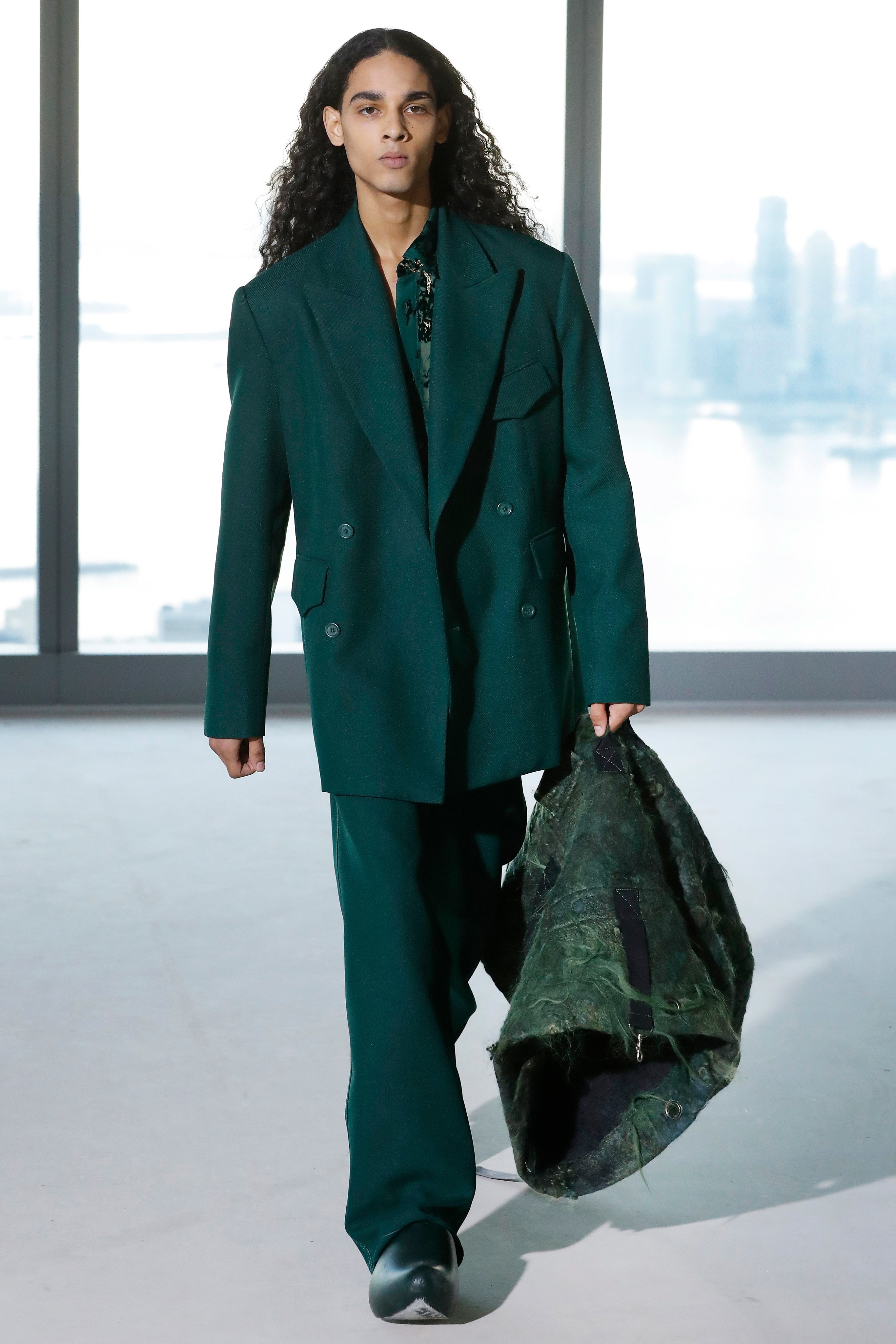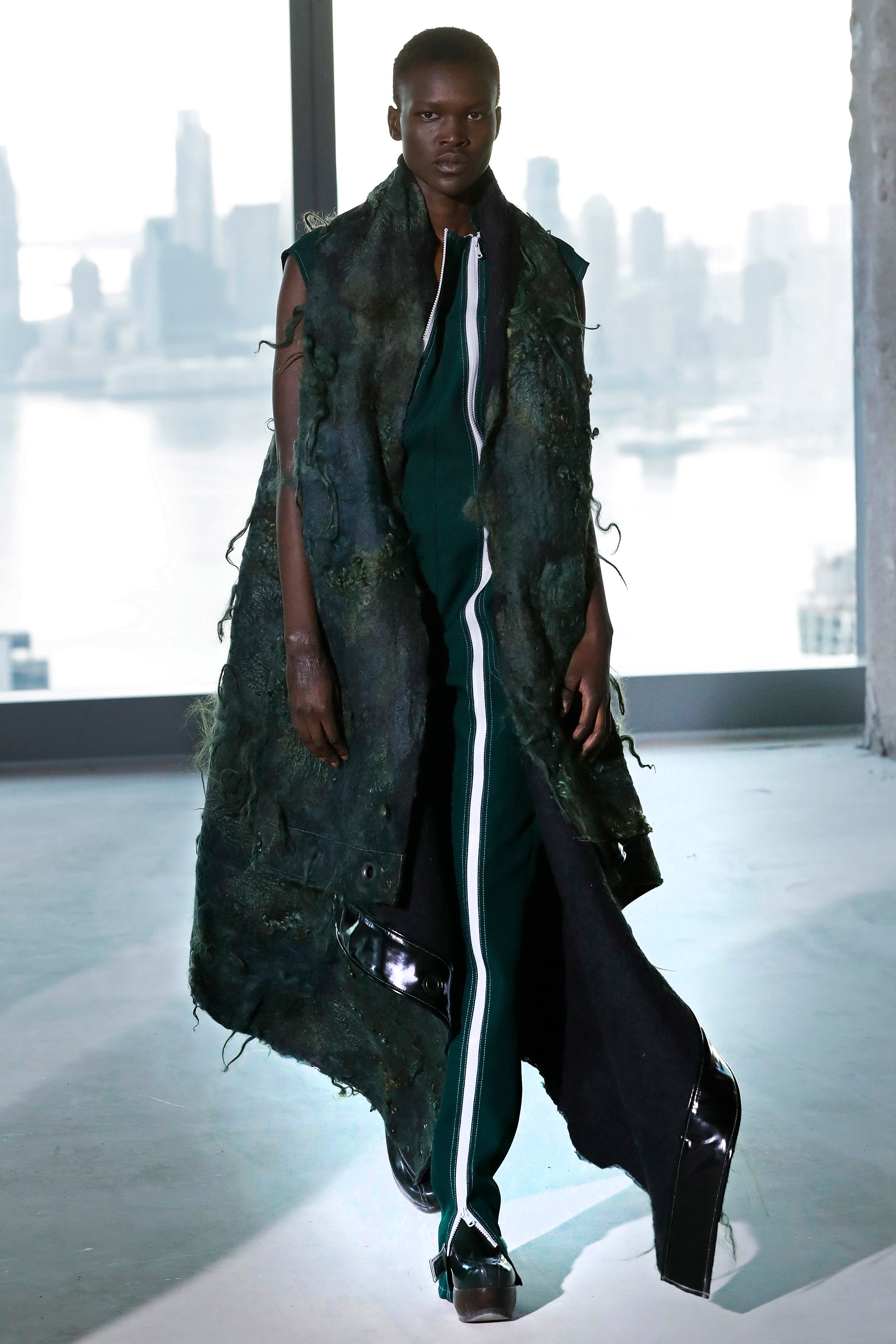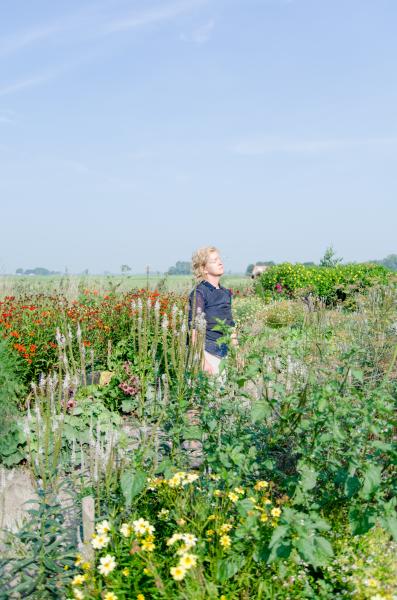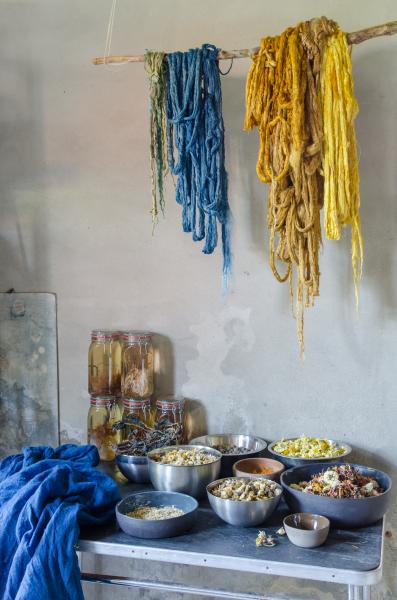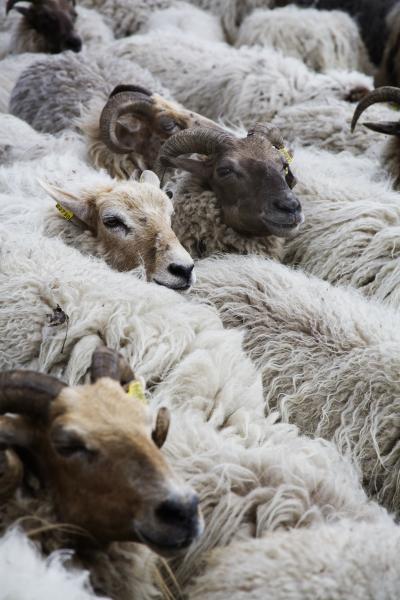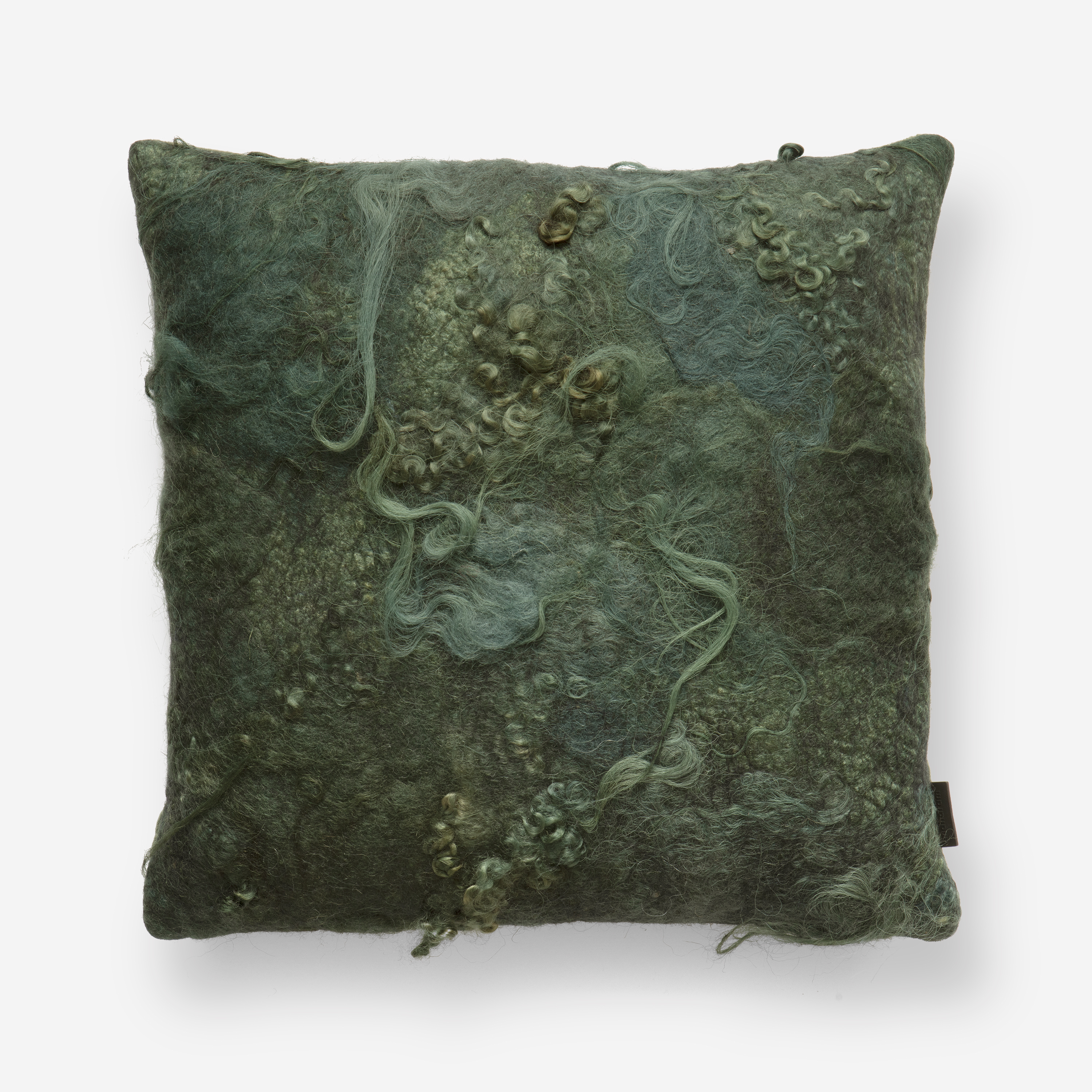This season references Countryside, The Future, an exhibition by Dutch architect, architectural theorist, and urbanist Rem Koolhaas that addresses the radical transformation of remote and wild landscapes, shifting focus from urban to rural ecology. United by a shared commitment to material exploration, Sies Marjan invited Maharam and Claudy Jongstra to participate in both its latest ready-to-wear collection, which explores the theme of the countryside across extensive material research, and a capsule collection, Sies Marjan x AMO. This is the first time Maharam and Sies Marjan have worked together.
Sies Marjan’s Fall/Winter 2020 Countryside Collection spans a range of silhouettes referencing workwear and protective layers along with numerous textile production methods closely tied to the natural world including Claudy Jongstra’s Drenthe Heath—a raw felted surface distinguished by its exaggerated tactility and unique production method. Sies Marjan’s Creative Director, Sander Lak, notes: “We are thrilled that Sies Marjan is one of the sponsors of Rem’s exhibition opening later this month at the Guggenheim. I spent a lot of time thinking about this collection and how to incorporate some of the themes presented within the exhibit. It was an honor to collaborate with Claudy as her work fits perfectly within this narrative.”
The product of a completely sustainable chain of creation, Drenthe Heath was first presented in 2005 by Claudy Jongstra, a Dutch textile artist based in Spannum, the Netherlands. With both environmental and artisanal conservation at the center of her work, Jongstra has mastered the ancient technique of making wool felt since 1994. Known for monumental hand-felted artworks and architectural installations comprising raw and woven natural fibers, Jongstra maintains her own flock of indigenous Drenthe Heath sheep which she combines with wool from Merino and Wensleydale breeds, natural mulberry silk, woven silk chiffon, and locally harvested biodynamic dyestuffs to make Drenthe Heath. Guided by a dedication to biodiversity and sustainability, Jongstra additionally raises bees and operates a small-scale biodynamic farm and bakery in the northern Netherlands.
Drenthe Heath sheep are integral to Jongstra’s practice—not only as it relates to the felt, but also because they contribute towards the ecological preservation of the Dutch moorlands, which depends on traditional landscape management practices, such as grazing. Europe’s oldest breed of sheep, Drenthe Heath are raised primarily for vegetation management rather than wool or meat production. The disappearance of these practices in combination with increased pollution has accelerated the natural transformation of heathland into woodland. Without management, loss of the heathland would quickly endanger a range of biotopes and ecosystems. After threat of extinction due tochemical fertilizers, conservation efforts for Drenthe Heath sheep began in 1948 with the discovery of a herd in the Dutch village of Ruinen. Today there are over 1,200 Drenthe Heath in the world. Jongstra’s flock, under the careful orchestration of an expert shepherd, maintains vegetative biodiversity, thus supporting habitat diversity and many associated species of flora and fauna. The sheep also disperse the heath seeds while grazing, sowing the future landscapes as they roam.
Jongstra’s approach to sourcing dyes is similarly immersive, with a dedicated biodynamic garden adjacent to her dye workshop. After noting that many surrounding farms operated on a monoculture-based economic model—with potato, grass, and grain dominating the landscape—Jongstra launched Northern Colors, an initiative to promote biodiversity across the northern Netherlands. By creating an economic incentive, Studio Claudy Jongstra has enabled eight local farmers to dedicate a portion of their native land to traditional natural dye plants like woad (European indigo), Madder, and chamomile. The limited-edition color selected by Sies Marjan, 010 Kelp, is hand-dyed using walnut husks, yellow onion skins, indigo, and Madder grown in Jongstra’s own biodynamic dye garden and local farms affiliated with her Northern Colors initiative.
Overlooking a dense cityscape from the 54th floor of One Manhattan West, the Countryside Collection was first presented on February 9th, 2020 featuring two outerwear garments incorporating Drenthe Heath, including the show’s finale. A limited edition of Maharam pillows featuring Drenthe Heath are available as part of the Sies Marjan x AMO capsule collection at the Guggenheim Store, Sies Marjan, 1stdibs, and maharam.com.
About Claudy Jongstra
Claudy Jongstra (b. 1963, the Netherlands) is a Dutch textile artist whose holistic practice is intertwined with the natural cycle of her native landscape and whose artworks and architectural installations embody environmental advocacy, carefully considering the evolution of color and material from source to site. Jongstra’s work is included in the permanent collections of the Cooper Hewitt, Smithsonian Design Museum; the Los Angeles County Museum of Art; the Museum of Modern Art; the RISD Museum; the Stedelijk Museum; and the Victoria & Albert Museum, among others. Recent large-scale installations include Fields of Transformation for the Moelis Family Grand Reading Room at the University of Pennsylvania and Metamorphosis of the Butterfly for the US Embassy in The Hague.
About Sies Marjan
Sies Marjan is a luxury ready-to-wear label based in New York established in 2016 under the creative direction of Dutch designer Sander Lak (b. 1983, the Netherlands). Named for his father Sies, and his mother Marjan, the atelier is known for ethereal subversions of proportion and material brought to life through color.
